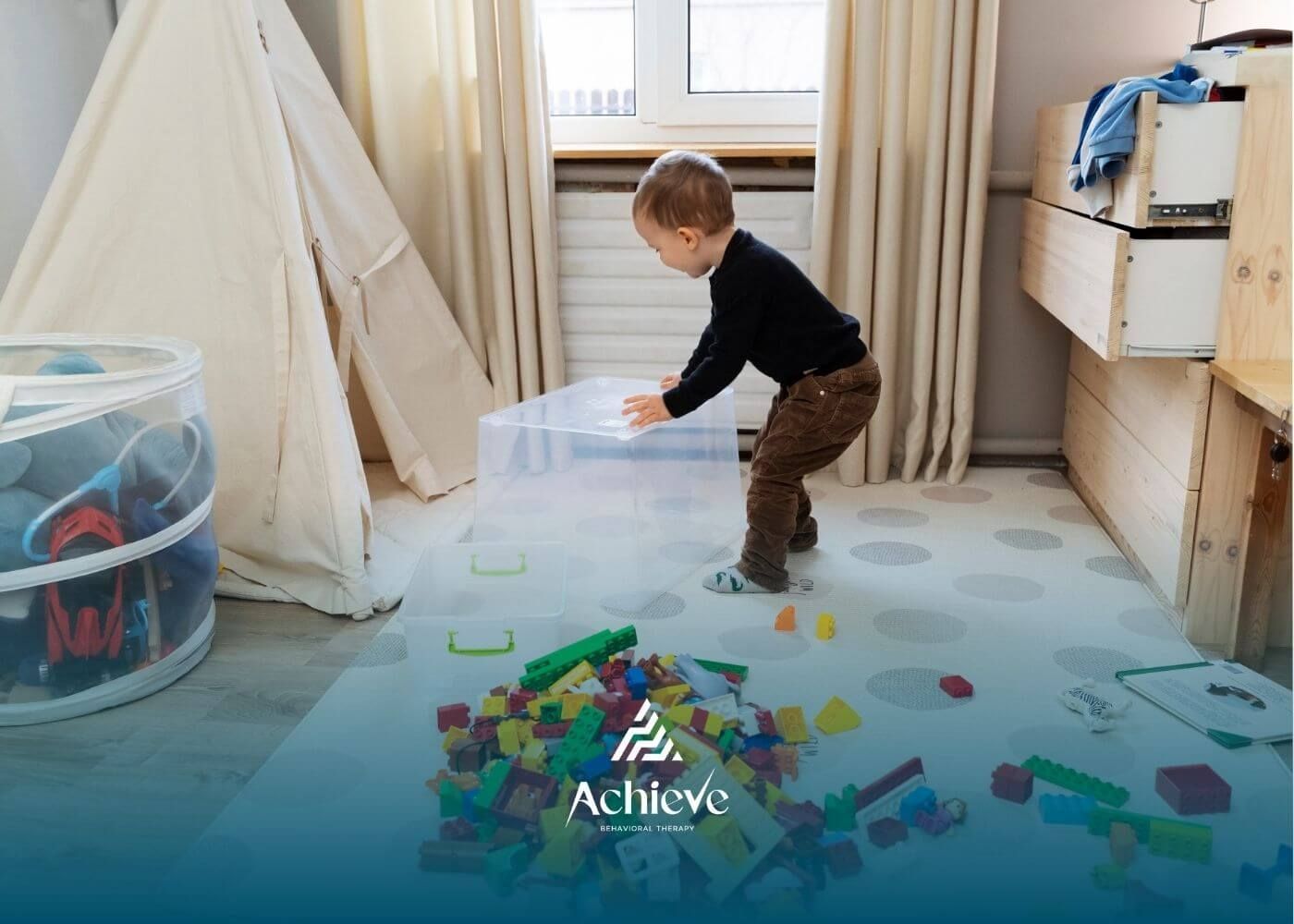How to Identify Autistic Meltdown vs Panic Attack in Children

When a child appears to lose control abruptly, families and professionals may wonder if it’s an autistic meltdown or a panic attack. When evaluating an autistic meltdown vs a panic attack in children, it is essential to recognize the distinct triggers, symptoms, duration, and intentionality. This article clarifies core definitions, outlines key differences side by side, and offers practical coping and prevention strategies for parents, ABA therapists, and educators in New Jersey and North Carolina.
Understanding Autistic Meltdowns
What Is A Meltdown?
An autistic meltdown is an involuntary reaction to overwhelming sensory, emotional, or environmental stimuli. Unlike a temper tantrum, a meltdown reflects the nervous system overload rather than a deliberate behavior. During a meltdown, the individual’s capacity to process information drops sharply, leading to a temporary loss of control.
Key Triggers For Meltdowns
- Sensory Overload:
loud noises, bright lights, or crowded environments
- Emotional Stress:
sudden changes in routine, transitions, or uncertainty
- Communication Challenges: frustration when unable to express needs or understand others
- Environmental Factors: unfamiliar settings, unpredictable schedules, or multitasking demands
Typical Meltdown Behaviors
- Crying, yelling, or screaming without a clear intent to manipulate
- Self-injurious actions such as head banging or biting
- Aggressive gestures like hitting, kicking, or throwing objects
- Repetitive movements or stimming behaviors (rocking, hand flapping)
Recognizing Panic Attacks
What Is A Panic Attack?
A panic attack is a sudden episode of intense fear or discomfort that peaks within minutes, often linked to an anxiety disorder. Physical symptoms tend to dominate, creating the sense of a medical emergency even when no illness is present.
Common Panic Triggers
- Specific Stressors: public speaking, medical procedures, or social pressures
- Persistent Worry:
ongoing anxiety about future events or performance
- Environmental Cues: enclosed spaces, high sensory stimulation
- Unexpected Onset: episodes may arise without an identifiable trigger
Panic Attack Symptoms
- Rapid heartbeat or palpitations
- Sweating, trembling, or shaking
- Shortness of breath or feeling smothered
- Chest pain, nausea, or dizziness
- Fear of losing control or dying
Comparing Both Episodes
Key Differences Overview
| Feature | Autistic Meltdown | Panic Attack |
|---|---|---|
| Definition | Involuntary loss of control due to sensory or emotional overload | Sudden fear episode peaking within minutes is tied to anxiety |
| Primary Causes | Sensory overload, routine changes, and communication stress | Anxiety triggers, persistent worry, phobias |
| Onset | Gradual buildup over time | Rapid onset, often without warning |
| Duration | Minutes to several hours | Usually peaks at 20–30 minutes before easing |
| Typical Behaviors | Crying, yelling, self-injury, stimming | Racing heart, sweating, trembling, fear |
| Intentionality | Not purposeful, beyond the individual’s control | Not intentional, but fueled by fear |
| Immediate Response | Remove triggers, sensory supports | Grounding, breathing exercises |
Managing Meltdowns And Attacks
Immediate Strategies For Meltdowns
- Create a Low Arousal Space: dim lights, reduce background noise
- Offer Sensory Supports:
ear defenders, weighted blankets, or favorite fidget tools
- Remain Calm And Nonjudgmental: avoid giving instructions or restrictions
- Provide Routine Cues: visual schedules or simple timers to signal next steps
Immediate Strategies For Panic Attacks
- Guide Through Deep Breathing:
slow inhalation and exhalation to reduce heart rate
- Use Grounding Techniques:
focus on five things in the room or feel the floor under your feet
- Encourage Muscle Relaxation:
sequentially tense and release muscle groups
- Offer Reassuring Language: simple phrases like “This will pass” to ease fear
Preventing Future Episodes
Meltdown Prevention Techniques
- Track Triggers With A Behavior Log: note times, settings, and warning signs
- Establish Predictable Routines:
consistent schedules and advance warnings for transitions
- Build In Sensory Breaks:
quiet corners or brief walks to diffuse overwhelm
- Teach Coping Skills: deep pressure activities, sensory fidgets, or calming music
Panic Attack Prevention Tips
- Develop Anxiety Management Plans:
cognitive coping strategies with a professional
- Practice Regular Relaxation:
meditation, yoga, or guided imagery
- Use Graded Exposure:
gradually face feared situations under guidance
- Seek Therapy As Needed: cognitive behavioral therapy or exposure therapy
Supporting Children In Settings
Strategies For Caregivers
- Develop A Personalized Support Plan:
include triggers, coping tools, and safe spaces
- Use Clear, Concrete Language:
avoid abstract concepts when explaining changes
- Validate Emotions:
acknowledge fear or distress before offering solutions
- Monitor Early Warning Signs: pacing, repetitive questioning, or restlessness
Strategies For Educators
- Create A Sensory-Friendly Classroom: Reduce clutter, offer noise-canceling headphones
- Provide Visual Schedules: calendars, choice boards, or timers for transitions
- Integrate Movement Breaks: short stretches or moments of quiet focus
- Collaborate With Therapists: share insights and strategies for consistency
Seeking Professional Support
When episodes become frequent or severe, families and professionals may turn to clinical assessment and intervention. A Functional Behavior Assessment (FBA) can identify patterns leading to meltdowns, while an anxiety evaluation may clarify panic triggers. Board-certified behavior analysts, child psychologists, and medical providers can recommend tailored therapies, from ABA interventions to cognitive behavioral therapy. Coordinated care helps ensure each child receives the right support for lasting progress.
Families and educators who learn to distinguish between autistic meltdowns and panic attacks can deliver more effective, compassionate care. By combining clear identification, immediate support, and long-term prevention, children gain tools to manage distress and build resilience.
Conclusion
Understanding the difference between an autistic meltdown and a panic attack is vital for parents, caregivers, and educators supporting children with autism. While both may involve intense emotional or physical reactions, meltdowns often stem from sensory overload or communication challenges, whereas panic attacks are driven by fear and anxiety. Recognizing the distinct triggers, body cues, and recovery needs helps caregivers respond with empathy rather than discipline.
At Achieve Behavioral Therapy, we help families understand and manage behaviors like meltdowns and anxiety through individualized ABA therapy plans in New Jersey and North Carolina. Our compassionate, evidence-based approach empowers children to develop self-regulation and communication skills that foster calm, confidence, and success in everyday life.
Schedule a consultation with us today to get personalized guidance and learn strategies that make a lasting difference for your child.
Frequently Asked Questions
How can I tell if my child is having an autistic meltdown or a panic attack?
Meltdowns usually follow sensory overload or frustration and may include crying, shouting, or physical behaviors, while panic attacks often appear suddenly with intense fear, rapid heartbeat, or shortness of breath. Observing triggers and body responses helps distinguish the two.
How should I respond during an autistic meltdown?
Stay calm, remove triggers if possible, and create a quiet, safe environment. Avoid punishment and focus on helping your child regulate with soothing activities or sensory tools.
Can ABA therapy help reduce meltdowns and anxiety in children with autism?
Yes. ABA therapy identifies the underlying causes of meltdowns and anxiety, teaches coping skills, and reinforces calm, adaptive responses, helping children manage overwhelming situations more effectively.
SOURCES:
https://www.leicspart.nhs.uk/autism-space/health-and-lifestyle/meltdowns-and-shutdowns/
https://www.autism.org.uk/advice-and-guidance/topics/behaviour/meltdowns/all-audiences
https://www.simplypsychology.org/autistic-meltdowns-vs-anxiety-attacks.html
https://www.rula.com/blog/autistic-meltdown-panic-attack/
https://reframingautism.org.au/all-about-autistic-meltdowns-a-guide-for-allies/
Need Support?
We're Here to Help!
Our experienced team is ready to assist you. Reach out today to discuss how we can support your child's development and well-being.
Get started with expert ABA therapy today.












